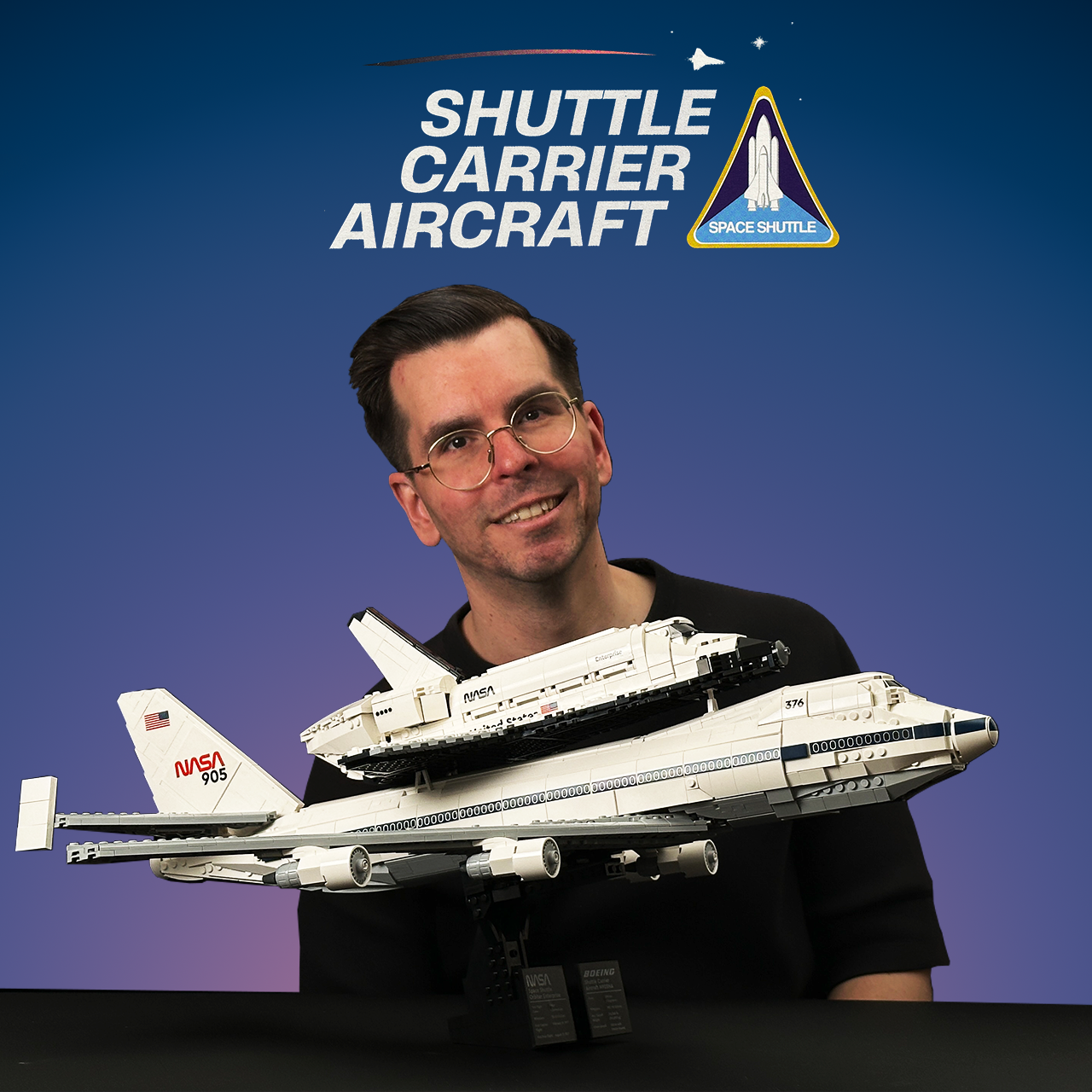Described by many as the world’s greatest piggyback ride, the Shuttle Carrier Aircraft played a pivotal role in the development and testing of NASA’s space shuttle program. Over its 30 years of service, it became a symbol of aerospace innovation, pairing the colossal Boeing 747 with the shuttle prototype Enterprise in an iconic fusion of air and space travel. LEGO has now captured this marvel in brick form, delivering a detailed 2,417-piece set that includes both aircraft along with a sleek display stand. But how well does it honor the legacy it represents?
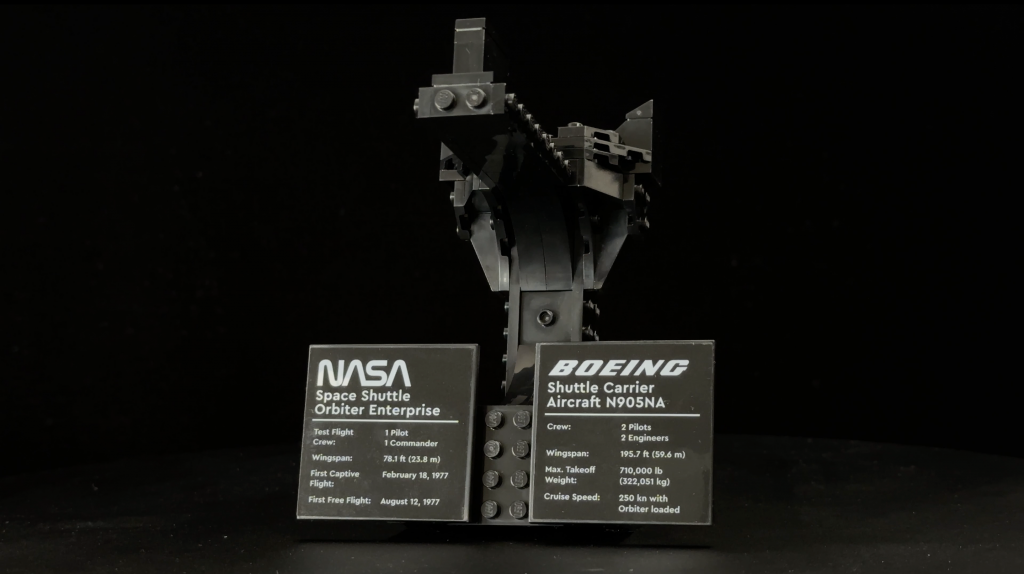
The set begins with a minimalist, all-black display stand. It features two separate info plaques—one for the Boeing 747 Shuttle Carrier Aircraft and another for the Space Shuttle Enterprise—each listing technical details. The 747 rests on the molded base without locking in, supported by its retracted landing gear. To place the aircraft on the stand, the gear must be fully retracted, which can be done via an integrated gear mechanism.
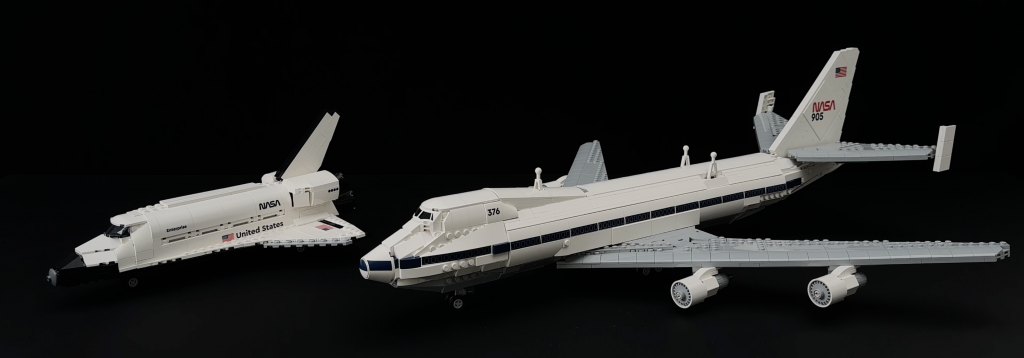
The build features two separate models: the Space Shuttle and the Boeing 747. Starting with the smaller of the two, the Space Shuttle Enterprise is a relatively simple construction. It captures the essential look and proportions, but the design—particularly the nose—feels rough and fragmented. The front uses a collection of mismatched slopes that don’t achieve a smooth finish, which is noticeable on a set aimed at adult collectors.
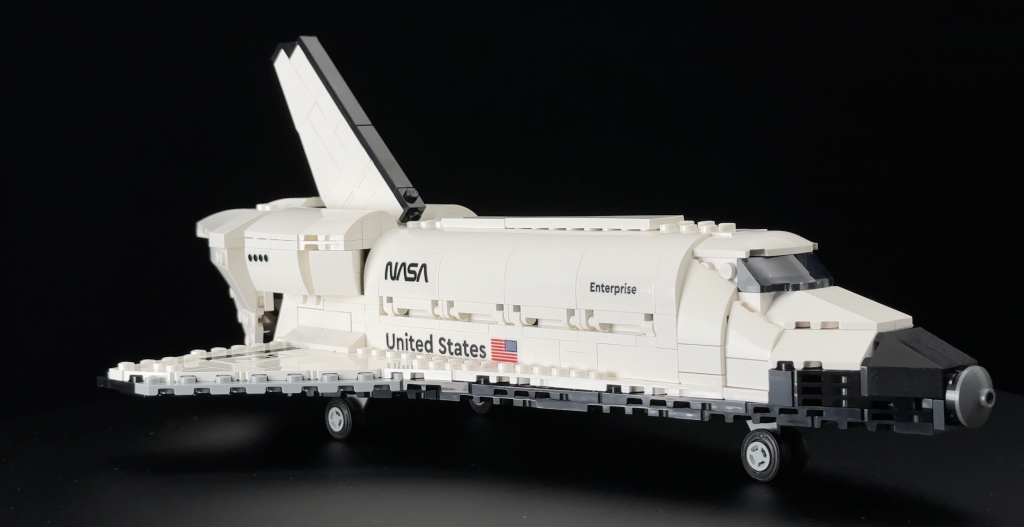
Stickers are used throughout the shuttle, and there are no printed elements. The transparent sticker sheets are prone to trapping air bubbles and dust underneath, giving them a slightly cloudy appearance once applied. Opening the cargo bay doors reveals a mostly empty interior with jumper plates and loose tiles, included for the practical function of storing the shuttle’s detached parts once it’s mounted on the 747.
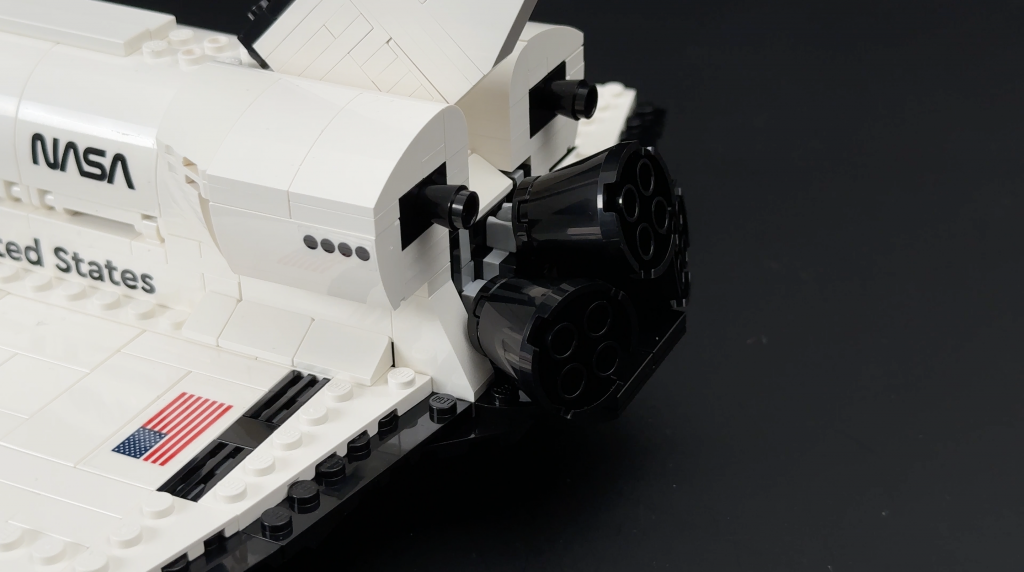
The rear engines are connected by ball joints, allowing for some movement and realism, while the angled rudder uses a bar-and-clip design that adds visual interest. Once the shuttle is converted for transport, its landing gear and engines are removed and placed inside the bay. A tail cone is then added to cover the engine openings, just as NASA did with the real shuttle during transport. Though clever in concept, the tail cone feels a bit bulky and could benefit from a cleaner design.
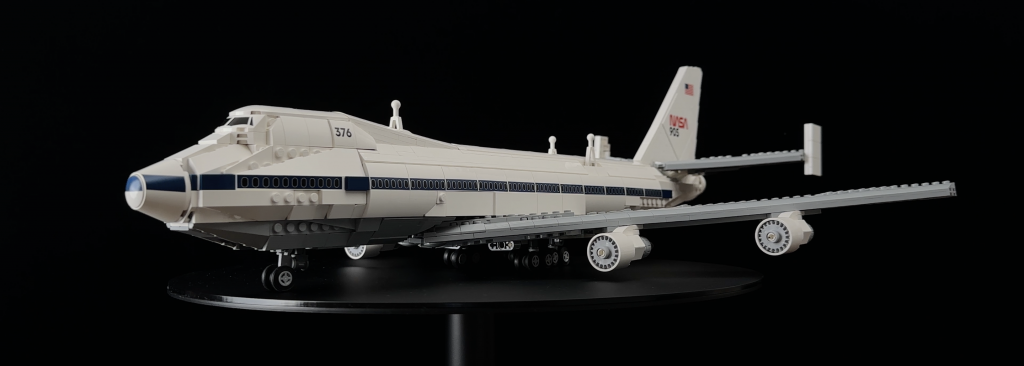
Turning to the larger of the two models, the Boeing 747 brings more refined construction techniques and an overall more satisfying building experience. While the shape of the nose still lacks the grace of the actual aircraft, the fuselage construction uses smart locking techniques and angled slopes to create smooth curves. Printed pieces include the cockpit windshield and dark blue window tiles that extend along the body.

Mounted atop the fuselage are two support struts, replicating NASA’s hardware used to hold the shuttle in place. The upper deck of the aircraft features a gradual transition from the lower body—an iconic silhouette of the 747—recreated here with well-integrated angled plates. The tail section also employs angled bricks, with the vertical stabilizer and rudder matching the subtle upward pitch of the real aircraft’s tail.
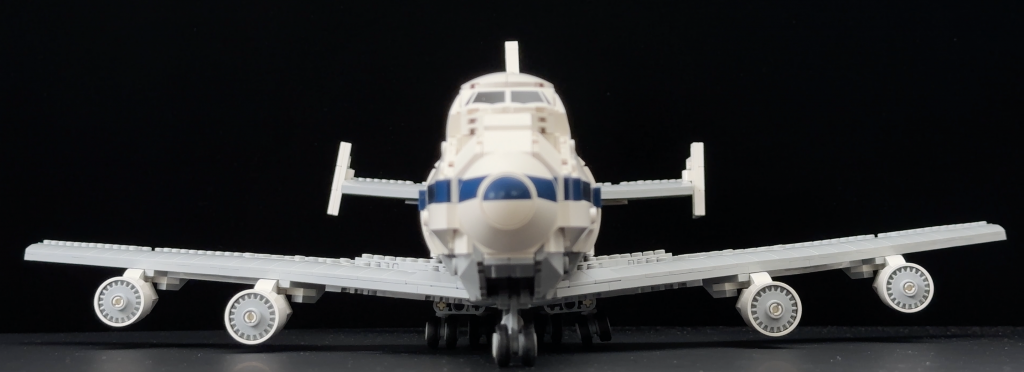
The wings are shaped accurately with the correct upward and rearward tilt, but where they connect to the fuselage, the design feels awkward. There are visible gaps and bulky junctions that interrupt the otherwise sleek form. From above, the aircraft presents well, but flipping it over reveals less polished details. Some of the underside wing plates appear oddly oriented and visually inconsistent. However, the use of LEGO barrels as jet engines adds a fun and creative touch.
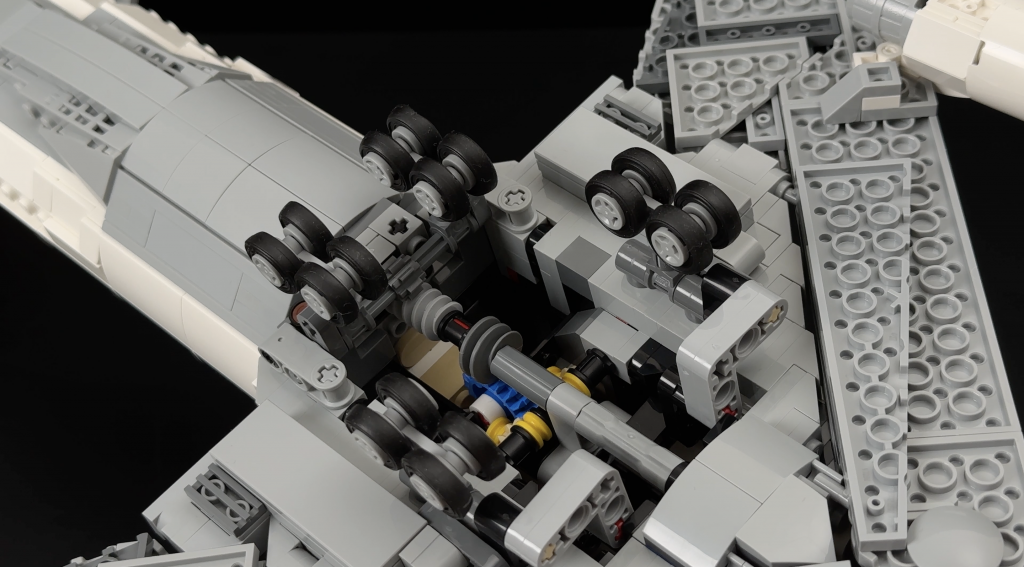
The landing gear, one of the set’s few moving features, is linked so that turning one wheel retracts all three sets of gear simultaneously. This is necessary when placing the 747 on its display stand. While the system works, it’s a bit finicky and doesn’t feel quite as polished as the one used in LEGO’s Concorde set.
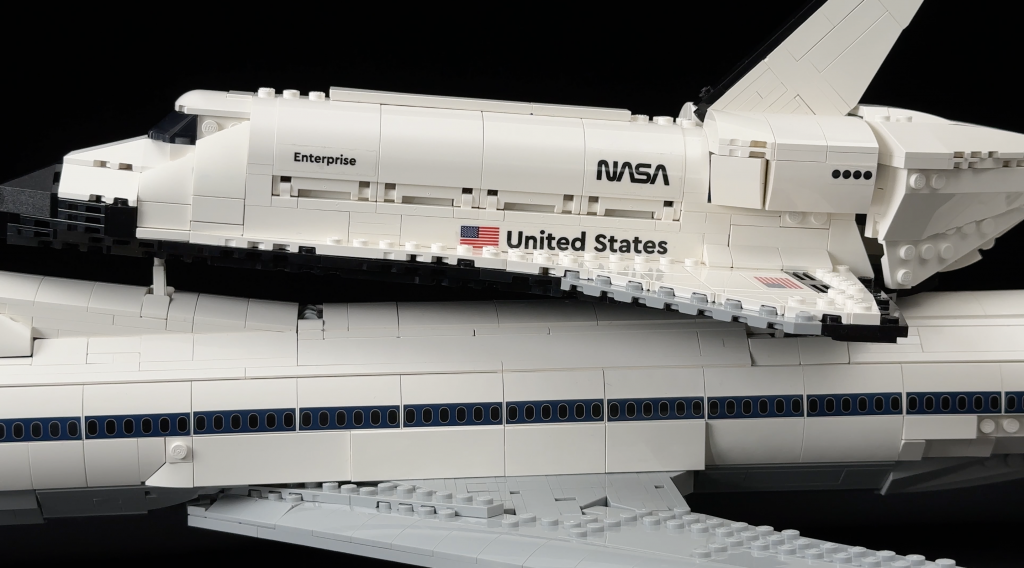
Mounting the shuttle on top of the Boeing 747 is a satisfying process. Once the engines and landing gear are removed, and the tail cone is in place, the shuttle clicks into the struts with a secure fit. Seeing both models combined is a powerful visual moment that elevates the display value of the entire set.

Priced at $230 USD / €230 EUR / £200 GBP, the set includes two instruction booklets—one for each aircraft. The first booklet also features background information about the Shuttle Carrier Aircraft and its role in spaceflight history. The build time is around six hours, and while not overly complex, it can be repetitive and leaves fingers a bit sore by the end.
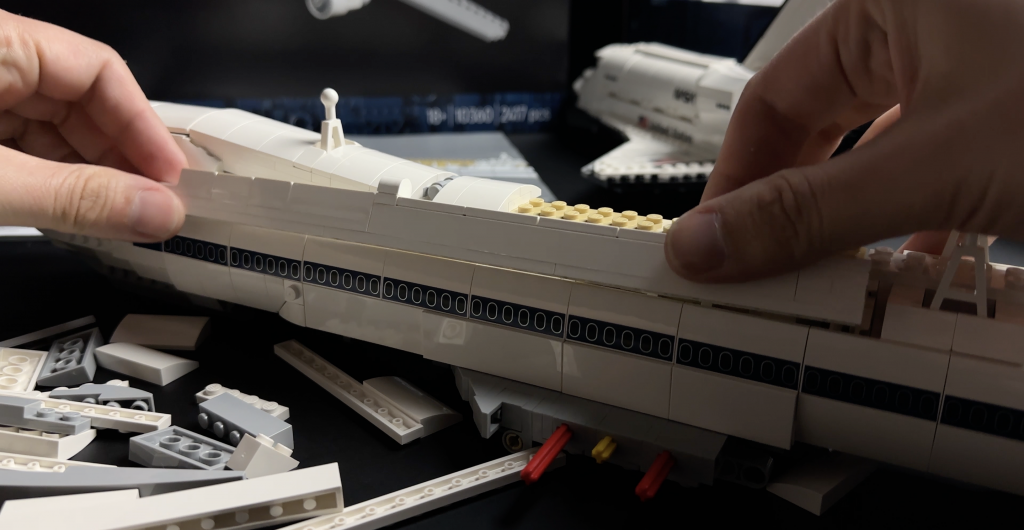
One standout aspect of the Boeing 747 build is the method for attaching wall panels: rather than building them directly onto the fuselage, sections are built separately and later attached to the base structure. This technique allows for greater detail but results in slightly weaker structural connections. There are also some minor quirks—extra pieces found in the bags, unmarked components in the manual, and pre-assembled printed tiles that can catch builders off guard.
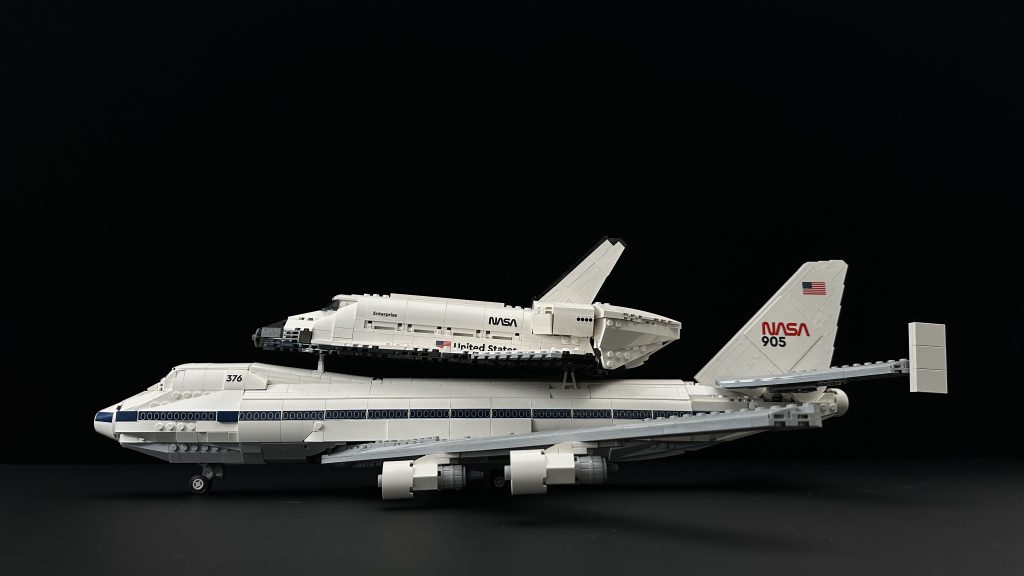
Despite its imperfections, the Shuttle Carrier Aircraft is an ambitious set with strong display potential. The 747’s build is the highlight, with some thoughtful design elements and fun part usage. The Space Shuttle feels a bit underwhelming in comparison, particularly in its rougher nose design and lack of printed elements. When placed beside the Concorde, this model doesn’t quite reach the same level of finesse, but for aviation or space enthusiasts, it’s still a meaningful and impressive addition to a collection.
For those interested in purchasing the set, affiliate links are available to support further content creation. Overall, the Shuttle Carrier Aircraft set successfully captures an important chapter in aerospace history and offers an enjoyable, if slightly flawed, building experience.
Support my work by purchasing your LEGO sets using my affiliate links (Lego.com) or amazon.com.

